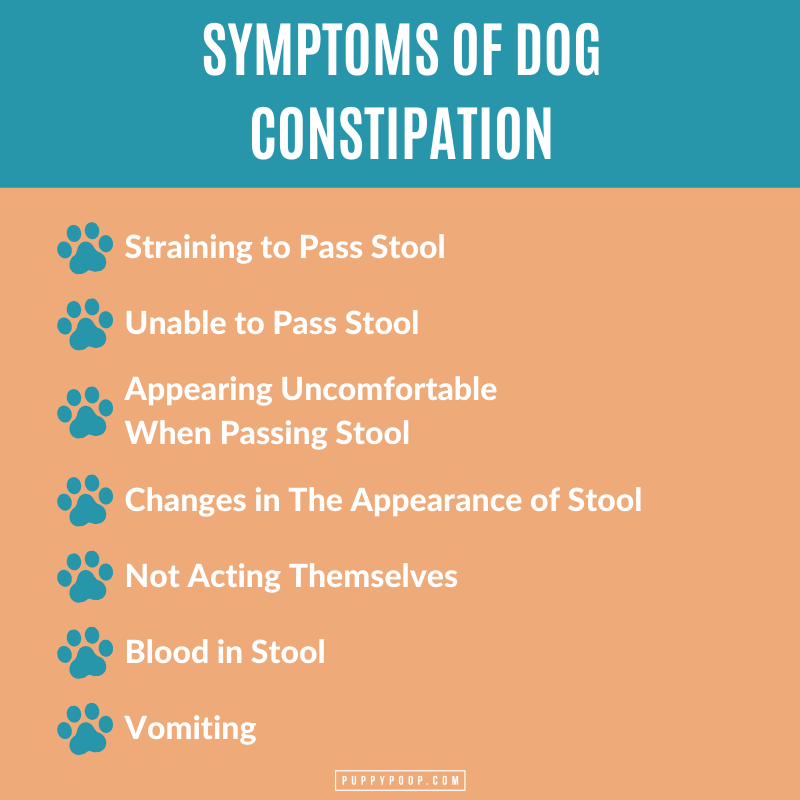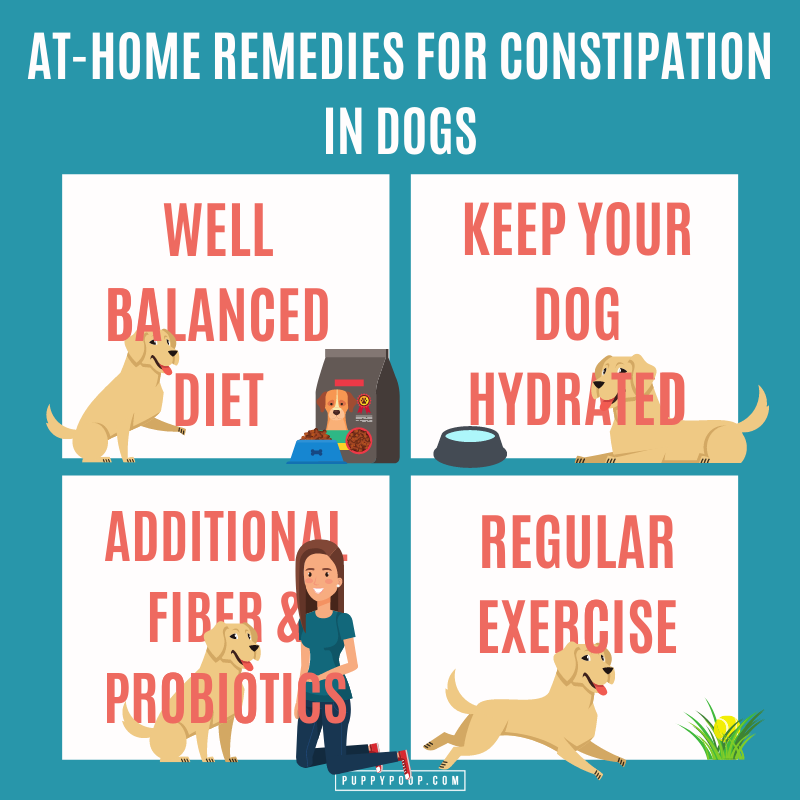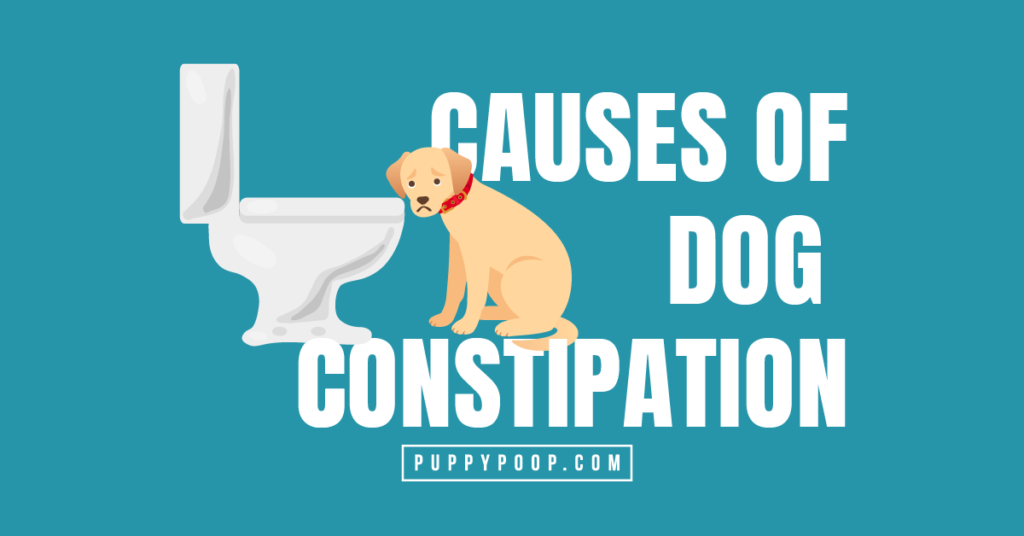Have you ever worried your dog might be constipated but didn’t know what to do about it? It’s not the most common issue dogs have, but it definitely happens from time to time. It’s usually easy to recognize when your dog has diarrhea, but it can be a bit more difficult to notice constipation in your dog. Don’t worry though – we’re here to help!
What is constipation?
Constipation in dogs is the difficulty passing stool or the inability to pass stool. While constipation is usually easy to reverse, there may be situations where it can indicate a more severe problem.
Signs of Constipation in Dogs
Some common signs of constipation in dogs include:

Straining to pass stool
If your dog is experiencing constipation, you may find that they strain to pass stool. Straining can be normal if it doesn’t commonly occur or if it only lasts a short period. However, if your dog strains for an unusually long time, he may be constipated.
It is important to note that straining can also occur with large intestinal diarrhea.
Unable to pass stool
Sometimes your dog may go 24 hours without passing stool. This may be unusual for them, but there is no need to worry right away. Instead, you’ll want to keep an eye on it. If your dog cannot pass stool after 48 hours, this would be the time to check in with your veterinarian.
If feces stay in the colon for prolonged periods, they may become too hard and compacted for your dog to pass on their own. This is obstipation and usually requires a veterinary visit to remove the impaction.
Appearing uncomfortable when passing stool
If your dog feels constipated or has trouble passing stool, they may whine when trying to go. If they yelp in pain, it may be a good idea to have them checked over by your veterinarian. This may indicate constipation, but there could also be another health issue like a urinary issue, joint issue, or muscle issue.
Changes in the appearance of stool
The stool may appear hard and dry, almost pellet-like. This occurs because more water is drawn from the stool the longer it sits in the colon.
If your male dog is experiencing an issue where their prostate has become enlarged, the feces may appear more ribbon-like. This occurs because of the compression on the colon, causing the stool to become flattened.
Blood in stool
Straining can sometimes lead to irritation of the small vessels around the anus. This can cause a small amount of bright red blood to appear in the stool. This should resolve once your dog no longer has trouble passing stool.
Not acting themselves
Your dog may seem a bit under the weather. For example, if they are constipated, they may have some abdominal discomfort or pain that makes them not feel like doing much. They may have lower energy and lower appetite as well.
Vomiting
In more severe cases of constipation, your dog may vomit. This will usually only occur if constipation has been going on for a longer period or some other underlying medical condition. If your dog is vomiting and has constipation, it may be best to call your veterinarian for further advice.
While we don’t always focus on our dog’s pooping habits, it’s a good idea to check up on it every once and a while, especially if they ‘go’ unattended. You will be able to catch any signs of constipation early and might even be able to fix the issue for your dog.
Dog constipation causes
Causes of constipation can be described as intraluminal or extraluminal. This refers to the inside of the colon or the lumen of the colon.
- Intraluminal causes usually refer to obstructions within the lumen of the colon. These are often the most common causes as they are often related to diet. However, there are many other causes as well.
- Extraluminal causes refer to structures outside the colon that may be compressing it.
Other causes of constipation include:
- Intrinsic causes of constipation: neurological issues that may affect your dog’s ability to pass stool
- Other diseases or health issues may just make it seem like your dog is constipated. Still, they may just be uncomfortable for another reason. For example, spinal pain, back pain, or orthopedic issues in the rear legs may also affect your dog’s bowel habits if they are uncomfortable squatting.
- Recent surgical procedures can also lead to constipation. This is because anesthetic medications may involve opioids, which are known to slow or inhibit gastric emptying.
- Medications like diuretics, anti-histamines, iron supplements, and potassium bromide (just to name a few) may also cause constipation. If your dog has been put on a new medication recently, it is always a good idea to ask your veterinarian if there are any side effects you should know about.
- Lack of exercise can cause digestion to slow down. This can lead to less frequent bowel movements.
This table provides some examples of the intraluminal, extraluminal and intrinsic causes of constipation in dogs.1
| Intraluminal | Extraluminal | Intrinsic |
|---|---|---|
| Too little fiber | Enlarged lymph nodes that surround the colon | Nerve damage that affects the nerves or muscles of the colon |
| Dehydration | Enlarged anal sacs | Hypothyroidism |
| Foreign material that is difficult to digest, causing an obstruction (fur, bones, cloth, etc.) | Enlarged prostate | Spinal cord lesions |
| Reluctant to defecate (due to stress or pain) | Tumor compressing the colon | Abnormalities in electrolytes (low potassium or elevated calcium) |
| Tumor causing partial or full obstruction | Pelvic fractures or injury that may cause the pelvis to become more narrow |
At-home remedies for treatment and prevention of constipation in dogs
If your dog has started to show early signs of constipation within the past 24 hours or so, you may be able to provide them some support from home. Early interventions can help prevent constipation from getting worse.

Appropriate and well balanced diet
What your dog eats is very important when it comes to their bowel movements. Many dog foods consist of high carbohydrates and low moisture which are not helpful for constipation.
Water
Keep your dog hydrated by making sure they have continuous access to clean, fresh drinking water. Fresh food and raw diets can also provide additional moisture.
Additional Fiber
Adding some extra fiber to your dog’s diet may help them become more regular. For example, 100% plain canned pumpkin is commonly recommended (1 teaspoon per 10 lbs of body weight given with food up to twice daily).
Probiotics
Probiotics are an excellent way to help your dog become more regular and improve their overall gut health.
Regular Exercise
Exercise may help get the gastrointestinal tract moving and help your pooch have regular bowel movements.
These are also important things to consider when you want to prevent constipation in your dog!
When to See Your Veterinarian
If your dog experiences constipation that lasts for more than 24-48 hours, you should let your veterinarian know so they can advise you further. Obstipation (impacted feces) can occur if your dog can’t pass feces for an extended period. Obstipation can be very painful for your dog and can progress to something called megacolon. Megacolon refers to dilation of the intestines due to the impacted feces. With megacolon, the colon will then not be able to function correctly to remove the feces. Both of these situations will require veterinary care to remove the feces.5
You should also see your veterinarian if your dog appears to have recurring bouts of constipation, as this may be a sign of an underlying problem. Your veterinarian will be able to perform a thorough physical exam and some necessary tests and radiographs to look for a cause.
Vital information to tell your veterinarian
Your veterinarian will be interested in knowing some details about your dog’s diet and health history. They may ask you certain details that are relevant to your dog’s constipation. For example:
- How long has the constipation been going on for?
- When was your dog’s last bowel movement?
- What does the stool look like? (details about color, straining, mucus, blood are essential here!)
- What is their regular diet? Has this changed recently?
- Is your dog well other than having constipation?
Possible Treatment Options For Constipation in Dogs
If at-home remedies don’t help your dog’s constipation, there are a few options available for your dog that your veterinarian may recommend. Your veterinarian may begin by recommending a diet change or certain supplements. If there is no improvement, common treatments include laxatives, enemas or manual removal of feces. Your veterinarian will be able to advise the best option for your dog depending on their clinical signs and history.
Laxatives or stool softeners may be recommended by your veterinarian. While many human laxatives can be used in dogs, it is best to wait until discussing with your veterinarian before using one of these. There are also specific formulations made for animals (such as Lactulose) that are often prescribed.
In more severe or chronic cases, hospitalization may be necessary. Fluids may be needed to correct dehydration or enemas and manual removal may be needed. Enemas should only be done by your veterinarian. If an enema is unable to resolve the issue, manual removal might be necessary. This is a more invasive procedure that may require your dog to be put under anesthesia and may require a few attempts to remove all feces.
Early intervention might help you to avoid these more invasive procedures. If your dog is experiencing minor signs of constipation, give some of these recommendations a try. But, constipation can become worse within a couple of days (and can be quite uncomfortable for your pup), so it is always best to reach out to your veterinarian if things aren’t improving!
Get the DIG Labs App
Download the free DIG Labs Digestive Health Tracker to get personalized insights and recommendations for your dog based on their stool.

